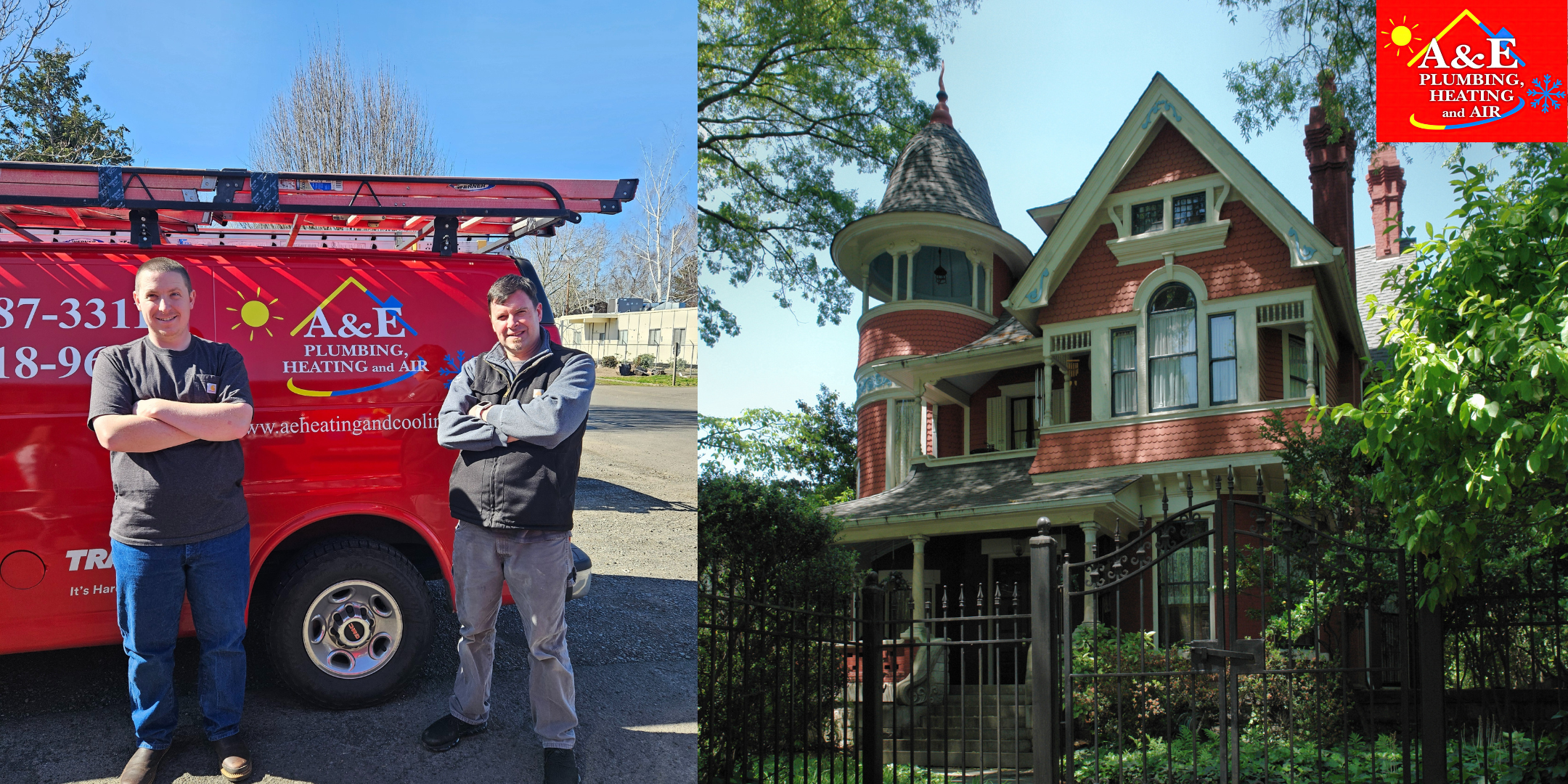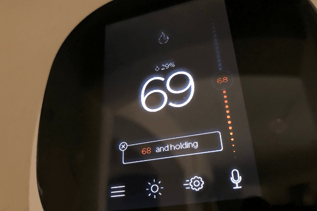
Topics:

If your home has more character than a Jane Austen novel but drafts like a barn door in winter, you’ve probably asked yourself: Can my HVAC system keep up without gutting the house? The answer is yes, and retrofits are the secret weapon.
probably asked yourself: Can my HVAC system keep up without gutting the house? The answer is yes, and retrofits are the secret weapon.
By the end of this article, you’ll know the top retrofit options for boosting HVAC efficiency in older and historic homes. And, just as important, you’ll feel confident deciding whether your home needs a small tweak or a full system glow-up.
And if you live in or around the Columbia River Gorge, the Portland/Gresham Metro, or throughout Oregon and Washington, our team has been retrofitting systems for more than 17 years. We’ve seen it all, from drafty Victorians to 1970s split-levels with shag carpeting still intact.
Retrofitting an HVAC system means upgrading or adding components to your existing equipment so it works more efficiently, delivers better comfort, and often lasts longer. Think of it as giving your current system a tune-up with modern technology—adding duct sealing, zoning controls, or a smart thermostat—without ripping everything out.
works more efficiently, delivers better comfort, and often lasts longer. Think of it as giving your current system a tune-up with modern technology—adding duct sealing, zoning controls, or a smart thermostat—without ripping everything out.
It is not the same as a full replacement. Retrofitting doesn’t mean tossing your furnace, heat pump, or ducts unless they’re beyond repair. Instead, it focuses on improving what’s already in place. If your system is extremely old, unsafe, or too undersized for your home, then a replacement might be the right call—but most of the time, retrofits are about maximizing value from what you have.
Many homeowners hesitate when they hear the word replacement. Replacing a full HVAC system in a historic property often means tearing into walls, disrupting plaster, and altering the very character of the home. It can feel invasive and unnecessary when the existing system still has life left in it.
Retrofits solve this problem. They allow you to keep the bones of your home intact while improving comfort and efficiency. Here’s what makes retrofitting such a smart choice:
Older homes often have uneven heating and cooling, leaving bedrooms stuffy and basements freezing. Retrofitting helps balance the airflow so every space is livable.
Historic houses are notorious for energy loss. Pairing modern HVAC technology with your current system keeps monthly bills from spiraling.
Instead of cutting through original walls or ceilings, retrofits work with your home’s design. That means no oversized ductwork ruining your home’s unique architecture.
In short: a retrofit feels less like a construction project and more like a thoughtful upgrade.
Homeowners across Oregon and Washington often ask: What retrofit will actually make the biggest difference in my comfort and monthly bills? While every home is different, these are the upgrades that consistently stand out:
Price range: $4,500–$8,500+ per system installed (depending on brand, number of zones, and electrical needs).
needs).
Installation time frame: 1–3 days, often with minimal disruption to walls or ceilings.
Why it matters: In historic homes from Portland to Hood River, ductwork may not exist, or it may be too tight or fragile to expand. These compact, wall-mounted units deliver targeted heating and cooling where you need it most without adding ductwork. They’re especially useful in attics, additions, or upstairs bedrooms that never quite match the rest of the house. Homeowners see immediate benefits in comfort, plus lower monthly bills since these systems use efficient inverter technology.
Price range: $300–$800+ installed, depending on brand and whether rewiring is needed.
Installation time frame: 1–2 hours for most homes.
Why it matters: In climates like the Columbia River Gorge, where spring and fall temperatures swing drastically, fine-tuned control saves energy and avoids constant adjustments. Smart thermostats can cut heating and cooling costs by up to 10% annually, and utility rebates in Oregon and Washington often make this upgrade even more affordable.
Price range: $4,200 per system+ (larger homes with two systems may see costs closer to $8,400). Cleaning is typically included before sealing.
Installation time frame: 1 full day for most homes.
Why it matters: Many homes in Gresham, The Dalles, and other Gorge communities lose up to 30% of conditioned air through leaks in old ductwork. Aeroseal seals leaks from the inside out, without opening up your walls, improving airflow without tearing open walls. The return on investment is strong: lower monthly bills, longer system life, and improved indoor comfort that lasts for decades.
Price range: $2,500–$4,500+ depending on the number of zones and whether dampers and controls can be integrated into existing ductwork.
be integrated into existing ductwork.
Installation time frame: 1–2 days.
Why it matters: Multi-level homes, especially older Victorians or split-level layouts, often suffer from uneven temperatures. Zoning systems add motorized dampers and controls so different areas of the house can be set independently. In places like Troutdale or Hood River, where basements run cold and upstairs bedrooms run hot, zoning means every family member finally agrees on the thermostat.
Price range: $600–$2,000+ depending on whether you install a high-efficiency media filter, UV light purification, or a whole-home air purifier.
purification, or a whole-home air purifier.
Installation time frame: 2–4 hours in most cases.
Why it matters: Older homes across Oregon and Washington often have higher dust levels and indoor allergens. Upgraded filtration systems improve air quality, reduce dust on surfaces, and help families with asthma or allergies breathe easier. Some advanced systems even neutralize odors and bacteria, which is especially valuable in damp Gorge climates.
Retrofitting isn’t just about saving money; it’s about solving real, everyday frustrations. Homeowners who take this step usually do so for three big reasons:
When you first started reading, you may have felt uncertain about whether an older or historic home could ever be comfortable without losing its character. Now you know that HVAC retrofits—like duct sealing, zoning, ductless systems, and smarter controls—make it possible to solve energy loss, uneven temperatures, and air quality challenges without starting from scratch.
ever be comfortable without losing its character. Now you know that HVAC retrofits—like duct sealing, zoning, ductless systems, and smarter controls—make it possible to solve energy loss, uneven temperatures, and air quality challenges without starting from scratch.
With over 17 years of expertise serving communities across Oregon and Washington, the experience shows that these upgrades are not just technical adjustments, but practical solutions that protect comfort and budgets.
At this point, you have the knowledge to weigh your options and decide which step best fits your home, your family, and your goals for the future to schedule your service with confidence. Whether you choose to work with us or another HVAC team, the benefits are clear and the improvements are lasting.
Daphne Hunt holds a bachelor's degree in English and Mass Communication and has a lifelong passion for writing. She thrives on using her skills to craft compelling pieces that inform, inspire, and connect with readers.
Topics: